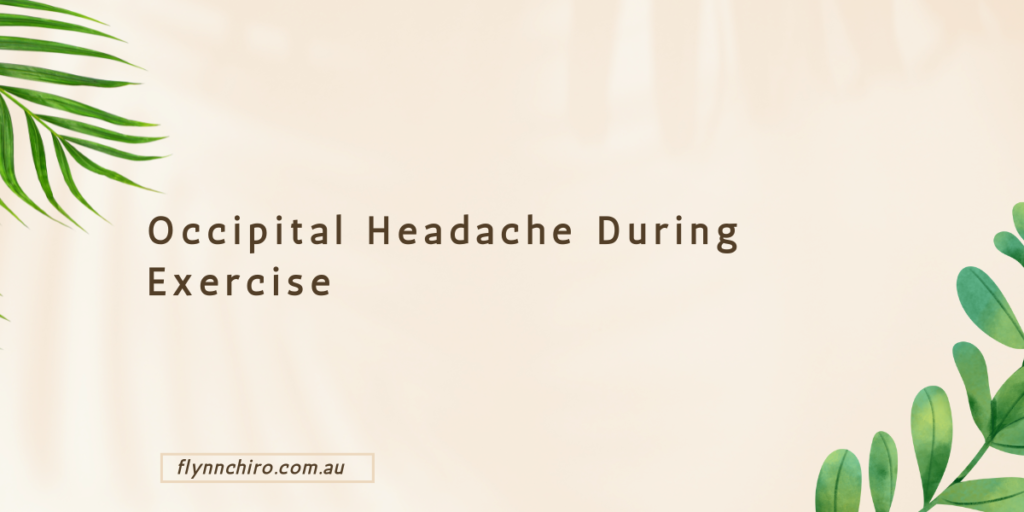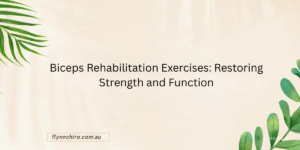
Occipital Headache During Exercise: Understanding and Managing the Pain
If you’ve ever experienced a throbbing pain at the back of your head during or after exercise, you may be dealing with an occipital headache. This type of headache can be frustrating and impact your quality of life, but with the right knowledge and care, you can effectively manage the pain and continue enjoying your active lifestyle.
What is an Occipital Headache?
An occipital headache or occipital neuralgia is a type of headache that occurs in the back of the head, near the base of the skull. It is often described as a throbbing or pulsating pain that can range from mild to severe.
Unlike other types of headaches, occipital headaches are typically felt on both sides of the head and may be accompanied by neck pain or stiffness.
How Do Occipital Headaches Differ From Migraines And Other Types Of Headaches?
While occipital headaches share some similarities with migraines and other headache disorders, there are distinct differences. Migraines often involve additional symptoms such as visual disturbances, nausea, and sensitivity to light and sound.
Tension headaches, on the other hand, tend to cause a dull, constant pressure around the head.
Occipital headaches are unique in their location and are often triggered by physical activities or neck strain. They may also be associated with underlying conditions such as arthritis or nerve irritation in the neck.
Causes of Occipital Headaches During Exercise

Several factors can contribute to the development of occipital headaches during exercise:
- Muscle tension and strain: Overworking the muscles in the neck and shoulders can lead to tension and strain, triggering headaches.
- Imbalances in deep stabilizing muscles: Weakness or imbalances in the deep muscles that support the neck can cause strain and headaches.
- Predisposing factors: Poor posture, stress, and dehydration can increase the risk of occipital headaches.
Diagnosis and Evaluation
If you’re experiencing recurring occipital headaches, it’s essential to seek a professional evaluation. A thorough assessment may include:
- A detailed medical history
- Examination of overall health
- Neurological exam
Assessment of muscles and joints in the neck, shoulders, head, and jaw
Your healthcare provider will work to differentiate occipital headaches from other headache disorders and identify any underlying conditions that may be contributing to your pain.
Treatment Options for Occipital Headaches
Treatment for occipital headaches during exercise may involve a combination of approaches:
Rest and pain relief: Taking a break from exercise and using over-the-counter pain relievers can provide temporary relief.
- Rehabilitation: Strengthening exercises for neck and shoulder muscles, balancing exercises for deep stabilizing muscles, and manual therapy can improve muscle and joint function.
- Addressing triggers: Identifying and managing predisposing factors such as poor posture, stress, and dehydration can help prevent headaches.
- Medications: In some cases, prescription medications may be necessary for pain management.
How can a chiropractor help with occipital headaches?
Chiropractors are trained to identify and treat musculoskeletal issues that can contribute to occipital headaches. They use a variety of techniques, including:
- Spinal adjustments to improve joint mobility and reduce nerve irritation
- Soft tissue therapy to relieve muscle tension and promote healing
- Exercise and stretching recommendations to improve posture and strength
The best chiropractors in Melbourne can develop a personalized treatment plan to address your specific needs and help you find relief from occipital headaches.
Prevention Strategies for Occipital Headaches
In addition to seeking professional care, there are several steps you can take to prevent occipital headaches during exercise:
- Maintain good posture during exercise
- Perform proper warm-up and cool-down routines
- Engage in regular stretching and flexibility exercises
- Gradually increase exercise intensity
- Use proper equipment and technique
- Manage stress and stay hydrated
When to Seek Medical Attention
While occipital headaches can often be managed with self-care and conservative treatments, there are times when it’s important to seek medical attention:
- If you experience severe, persistent, or worsening headaches
- If your headaches are accompanied by other concerning symptoms such as vision changes, numbness, or weakness
- If your headaches significantly interfere with your daily activities
Final Thoughts
Occipital headaches during exercise can be a challenging condition to deal with, but with the right knowledge and care, you can effectively manage your pain and continue enjoying an active lifestyle.
Remember to seek professional help if you’re experiencing recurring headaches, and don’t hesitate to explore treatment options such as chiropractic care.
By understanding the causes, prevention strategies, and treatment options for occipital headaches, you can take control of your health and get back to the activities you love.

Flynn Pettersson
I am committed to providing exceptional chiropractic care in Melbourne, focused on your health and well-being.

Flynn Pettersson
I am committed to providing exceptional chiropractic care in Melbourne, focused on your health and well-being.






